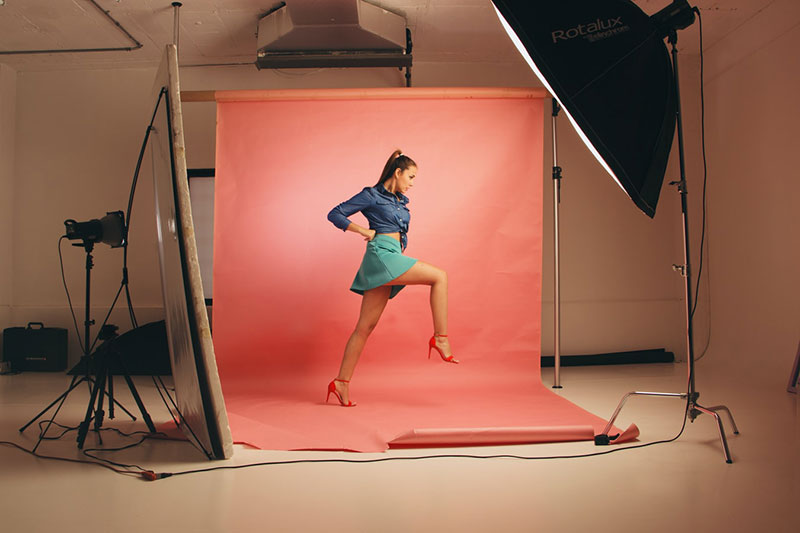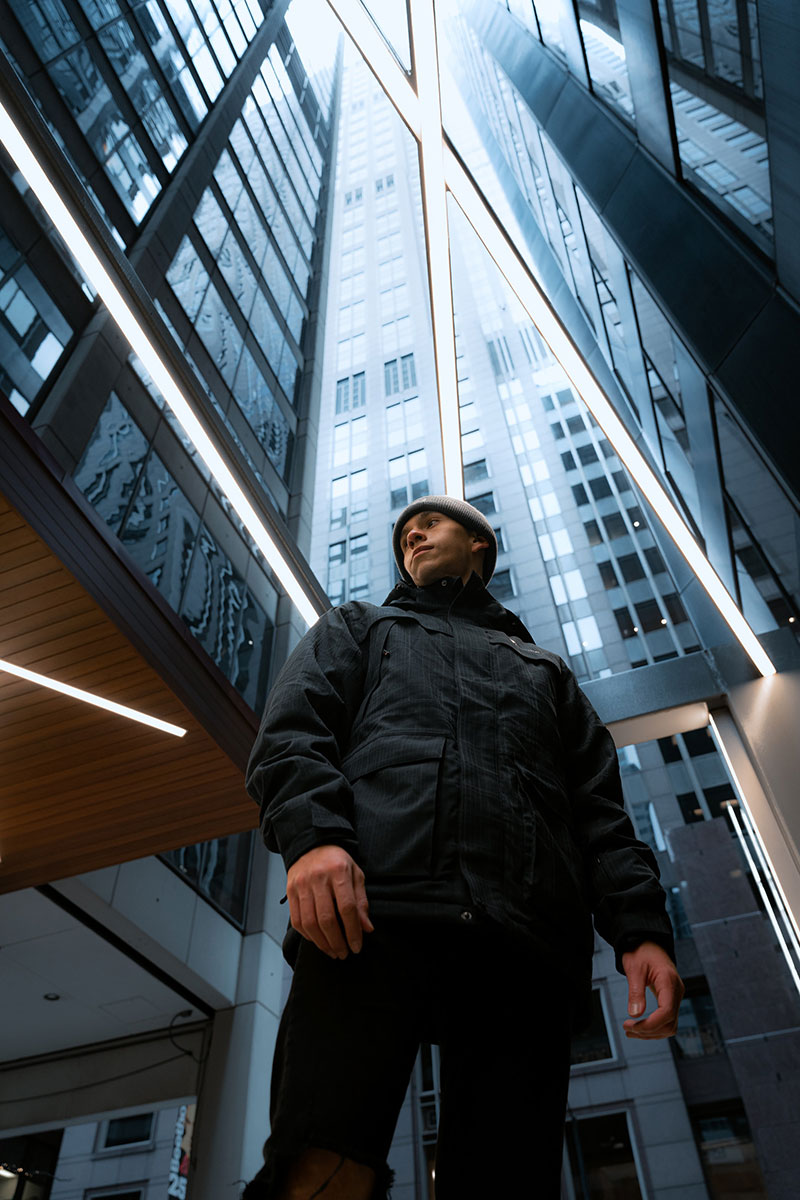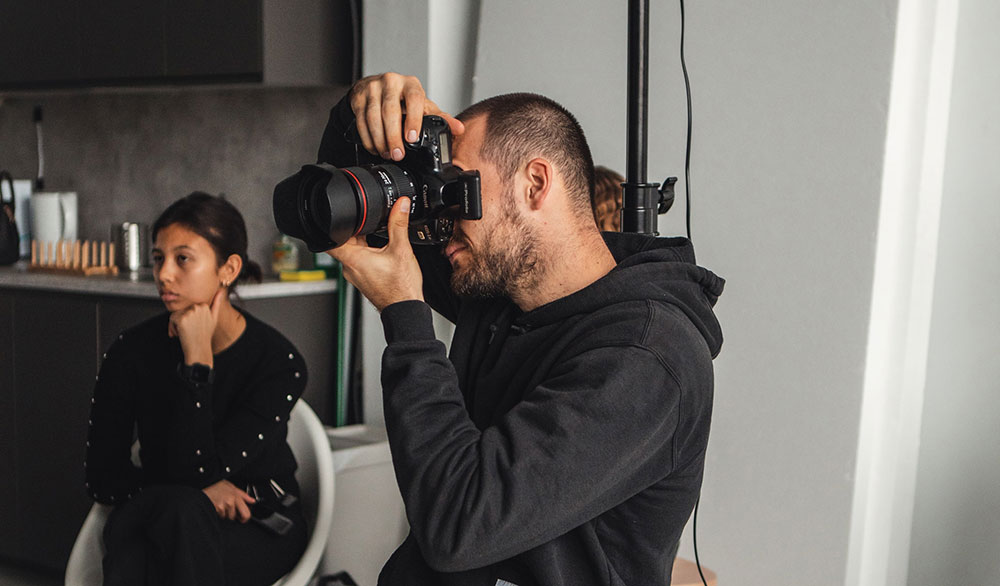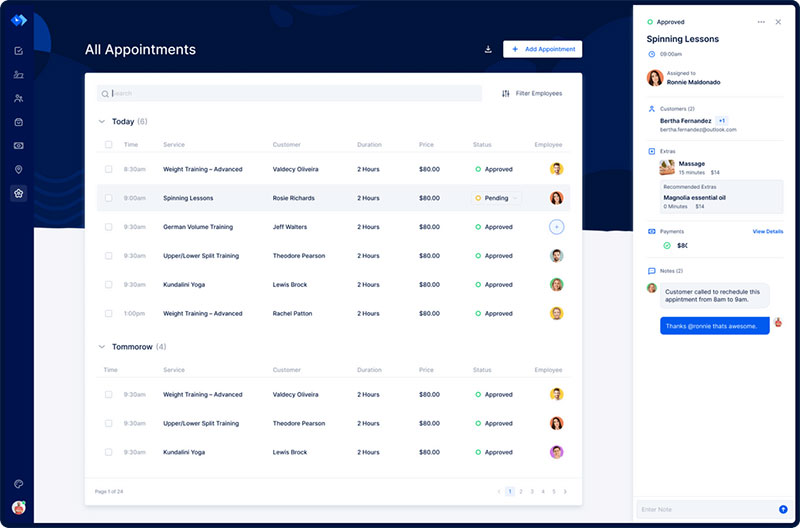If a person is a beginner in the photography business, it is important to learn how to prepare for a photoshoot. Clients set their standards high, so every photographer should meet these standards. Apart from the quality, the quantity of good shots is also crucial.
Entering this career means more than grabbing a camera. It also means making a big deal in creating a masterpiece of photos. Before working on photoshoots, there are a few things to consider. These include choosing the best location, equipment, and concept.
Including these in the decision-making factors will help organize the photoshoot planning. Both seasoned pros and amateurs need to work on these steps to create a successful photoshoot outcome.
The following are the latest tips for a smooth transaction with clients.
Work on the Model Ideas and Styles and Discuss it with Clients

When working on several projects, it is important to be on the same page as the clients. Have visual information with a clear intention and purpose presented to them. Clients and photographers should be on the same page, especially when it comes to the required result.
One of the best ways to do this is to have a mood board. Photographers can do this themselves, or clients can provide it. It is crucial for a more precise visualization of the outcome of the project. Mood boards have sketches, texts, words, and images.
This visual presentation should be easy to understand by the presenter and the client. Make sure to print them out and put them in their respective folders and projects.
Before creating a mood board, always ask for the clients’ opinions about the photos that inspire them. The things to look for are locations, poses, and palettes.
By catering to the clients’ needs and preferences, the final images might even pleasantly surprise them.
The Benefits of Discussing the Mood Board with Clients
- Deciding on the photoshoot location will be easier
- The photoshoot sequence will be smoother since the mood board presents the general plan.
- It gives photographers the confidence they need to know the photos’ purpose and style.
- The client will also have a great idea about the project’s possible outcome by having a mood board.
Create an Excellent Concept

Creating a great concept leads to better plans. A photographer can choose from personal photo sessions with a family member, portrait photography, or fashion photography. The final choice should be based on the photographer’s niche and the client’s preference.
Visualize the things included in the concept. That includes evoking a certain mood or feeling or emulating TV shows to come up with better ideas. These can serve as the stylistic or thematic jumping point. Now, look for images that support this concept.
These images represent all the ideas for the project and can create the mood board or Pinterest page. Creating these steps will lead to a more organized look, mood, and styling in all photography sessions.
Check the Location

Before signing an agreement on a particular place to do the photography, have a tech scout it out first. That will avoid any unnecessary problems after the photoshoot schedule has started. As the photographer, it is also essential to know every detail of the area and thoroughly familiarize yourself with the venue’s every detail.
Before Choosing the Photoshoot Area, There are Things to Consider
- The distance of the parking lot from the shooting location
- The type of terrain the area has, whether it is muddy or has puddles.
- Is the place safe to take a photoshoot and to set gear down while taking photos or videos?
- The number of people using the venue
However, things might still get out of control. So, it’s best to look for location B if the first one doesn’t work out.
Changing locations can happen, depending on the client’s request and the venue’s availability. Another to keep in mind is that some areas can be more challenging than others. There may be times where the distance between the car and the photoshoot area can be almost a mile.
When using a tech scout, don’t forget to bring the necessary lenses to take some test shots before doing the real thing. This will make it easier to know the perfect angle and lighting when the day of the photoshoot arrives. You can also edit settings afterward.
5 Reasons Why Tech Scouting Locations is Important
- Photographers can bring enough tools that work well for the venue.
- Photographers will know whether they need to use flash or not.
- Photographers can identify the lens filters they need.
- Photographers will know how bulky the camera bag will be.
- Photographers will have a better idea of what to wear.
Of course, dressing for a coffee shop photoshoot is different from dressing for a mountain photoshoot. By knowing the exact location before doing the real thing, photographers can decide the type of clothes they will wear.
It is also essential to roam around and note the beautiful areas where photographers can take shots of their subjects. These will help them to figure out the perfect scenarios for the photoshoot.
However, tech scouting the location in person can be impossible as some places are too far away to scout alone. In this case, Google Maps, Google Earth, Instagram Location Tags, or other similar platforms give the photographer good ideas regarding what is needed.
Have a Checklist of Tools to Bring on the Set
The tools or equipment needed on the set depends on the type of photoshoot. So, bring all the necessary tools that will fit the needs of the theme. Create a checklist to ensure that all the items are in the photographer’s bag.
If some items are missing from the checklist, the photographer can rent them from others to get an excellent photoshoot outcome.
However, take note that the lighter the bag, the better. This can be done using extra SD cards instead of three cameras and using zoom lenses rather than multiple primes. Doing so can save space and energy, especially if the location is hard to get to.
The Type of Lenses to Take

The type of lenses to bring depends on the theme and location.
Wide-angle lens
This type of lens is for environmental portraits or surrounding landscapes.
Standard Lens/Zoom Lens/Prime Lens
Wide-angle lenses are not the best option for up-close portraits since they might distort the facial features. Having these three lenses will create better quality photos and highlight facial features better.
Other Tools Needed
Silver Reflector
This one is an excellent tool to create beautiful portraits. This is crucial for portrait photography since it bounces the light back onto the subject’s face. It will result in better lighting with minimal shadows.
Fill Flash
Some might say that flash isn’t necessary during daylight. But that is not always the case. Fill flash fills in unsightly shadows for a clearer image.
Another thing to remember is to bring two of each item. That includes the camera and other materials. Doing so can save you from unwanted emergency scenarios.
Preparation Before the Shoot
Before going to the final shooting scene, photographers must be ready.
Here is another checklist to prepare the photographer well for the photoshoot.
Finalize the Plan
The plan should be finalized by this time, and both parties–the photographer team and client– should be on the same page.
Ensure that everything is ready, including the finalized plan and needed permits. Photographers need to check beforehand if the location is available and whether they need a license to shoot there.
Get more bookings with the right tool for the job
Staying organized has never been easier.
You can now manage your business and grow your brand with a single, powerful software that keeps all of your appointments in line, your clients organized and your business booming.
Trafft is the perfect service business scheduling software for business owners who need to streamline their booking experience both for their staff and their clients.
Trafft handles everything for you, even sending automated email or SMS reminders to your clients. No-shows? Not anymore!
The Trafft booking software adapts to different industries for a blissful online booking experience and employee management.
Want to know more? Check out Trafft's awesome features to see what you are missing.
Review Your Equipment Checklist Again
Before the day of the shoot, ensure that all the items are ready. Don’t wait for the next day to pack. Waiting until the morning to prepare opens the door to chaos. Preparing ahead of time will give photographers more time to check in the morning if they have forgotten something.
Shooting outdoors also means extra batteries are necessary. This isn’t because of the battery life. However, it will be challenging to find an outlet to charge cameras and other gadgets.
A checklist can go like this:
- Camera Gear
- Padded Camera Bags
- Batteries
- SD Cards
- Lenses
- Lighting Equipment
- Props
- Backup Inspiration Cards
This is general and only an example. Talk with the team members and ask them what other items to put in the bag or gear.
Clean and Retest Lenses and Filters
Don’t wait for the next day to do this. Cleaning the lenses and filters can save time because photographers can focus on more important things during the shoot. Checking and testing all the equipment beforehand can also protect them from unwanted mishaps.
Photographers can also prevent smudges from ruining the picture while taking photos. So, cleaning is a must to avoid this from happening.
Don’t Forget to Charge the Cameras’ Batteries

Aside from having extra batteries, the cameras’ batteries should be fully charged. During photoshoots, no one knows how many shots the photographer will need. That’s why having batteries should be a top priority.
Photographers should have at least two fully charged batteries. This will ensure that if the first one malfunctions, the other one will save the day.
Instead of buying disposable batteries, rechargeable AA and AAA batteries are a money-saver. It will also save photographers from the hassle of having to go to the store.
Check and Verify the Address
If the photographers aren’t familiar with the photoshoot location, checking the address beforehand can be a time-saver. Search the address online or ask a trusted friend who knows the location’s route.
In addition to these suggestions, photographers can also use Google Maps to search for the address. This will make the ride smoother.
Review the Camera Settings and Make Necessary Changes
Before the shoot, don’t forget to transfer or erase older photos from the memory card. Photographers have the option to set the camera to the mode they are comfortable with. One example of camera mode is the aperture priority. It gives photographers direct control over the depth of field. They can adjust how much of the subject to put in focus.
Turn off all unnecessary settings and start at a neutral point. Some things most photographers don’t want are exposure compensation or back button focusing.
Talk with Clients, Models, and Assistants
Being professional is a must in the photography business. That is especially true when communicating with clients, models, and their assistants. Moreover, it will prevent delayed photoshoots.
Try to contact them, politely saying, “We’re looking forward to tomorrow! See you at 9:00 a.m.” Doing this also indicates an organized team.
Always Check the Weather Forecast

Of course, no one wants bad weather. But it is sometimes inevitable. It is always best to prepare for the worst. Since the weather is unpredictable, don’t forget to check the news a few days before the photoshoot.
If the news says that it will be rainy, bring extra clothes, a waterproof jacket, raincoat, and umbrella. Even though the forecast says that it will not rain, it is still best to be prepared.
The Awaited Day of the Photoshoot
The following are the steps to take when the day of the shoot arrives. By this time, photographers should be fully prepared. But here are some guidelines to make the photoshoot flow smoothly.
Be an Early Bird
Being early at the set comes with many advantages. Arriving ahead of time will give the photographer more time to prepare everything.
Sometimes, the venue caters to different types of events. So, there might be times that the area needs to be rearranged.
Apart from that, the length of preparation depends on the type of shoot the photographers will do. So, if the shoot is more complicated, preparing for it might take more time.
For a studio photoshoot, photographers need to check and test the lighting. It can take an hour or more just preparing that.
A family portrait is easier, but that doesn’t mean that preparation isn’t necessary. Photographers still need 15-30 minutes to put all the materials and lighting together and test them before taking photos.
Talk Again with the Clients About the Details
Avoid any miscommunication with clients. Clear everything ahead of time to avoid any misunderstandings. After clearing everything, review the notes created before the shoot. Check all the details, including the lighting setup, backgrounds, poses, and angles.
Make a mental map of all the photoshoot goals, and tick each one off after finishing the process. Have a small notebook in your camera bag. Write down all the great ideas and the requirements before the shoot.
Envision the Photoshoot Setup

After tech scouting the venue, photographers will have an idea about the possible setup. Think about the possible shots. This will give you ideas about the right direction and lighting while taking photos.
Sometimes, photographers don’t get the outcome they imagined for several reasons. But the good thing is, they know what to do on future projects.
Be Mentally Ready
Photographers need to prepare their hearts and minds before entering the set. Forget all problems and set them aside for a while. Have a coffee or other drink or listen to their favorite music that is appropriate for the occasion.
Create an atmosphere that will also lift the mood of other people on the set. This will make everyone’s mood happier and more proactive. It is also advisable to play relaxing music during the photoshoot. That will let the crew, models, and assistants relax their minds.
Communicate with People on the Set and Stay Proactive
Make the atmosphere comfortable for other people. It is best to chat with the models and ask about their careers or other modeling-related topics when taking photos. Photographers can also share several things about photography.
With a comfortable atmosphere, artists or models will feel more at ease. Of course, only do this if the situation allows. But speaking throughout the photography session can make the model smile and laugh. This might even result in better candid shots.
Making the scenes more enjoyable can earn the photographers a good reputation. It shows that, despite being professional, they know how to amp up the situation and make the work professional and fun.
Have a Good Time
After finalizing the photoshoot, don’t forget to have fun. Being in the photography field is not always easy. It takes a lot of energy and mental readiness to get the project right.
Lighten the mood with the co-photographer and staff, and look at fun scenarios from the photoshoot. So, always bring candid shots with you. Looking at them during free hours can liven up the day.
Encourage one another and take the time to look at the positive outcome of the project. It is also a good time to see what the team missed on the photoshoot to improve for the next set.
FAQs about preparing for a photoshoot
1. What should I wear for my photoshoot?
During your photo shoot, it's crucial to wear something that makes you feel confident and at ease. You should dress in attire that is both attractive and appropriate for the shoot's style and theme. It should also fit you nicely. For example, you can wear formal or semi-formal attire for an event photoshoot, professional formal attire for a business photoshoot, etc. Avoid wearing clothing with prominent logos or branding, and opt for solid colors rather than complicated patterns. Choose attire that will allow for easy movement because you will be moving around.
2. How should I do my hair and makeup for a photoshoot?
Your hairstyle and cosmetics should highlight your best features and go well with your attire. Avoid using strong colors or heavy contouring; keep your makeup natural and understated. It's ideal to choose a hairstyle for the shoot that both suits your personal style and the theme. If you're unsure, think about hiring a skilled hair and makeup artist.
3. What props or accessories should I bring to the photoshoot?
Your photo shoot can get a lot of intrigue and personality by including props and accessories. You should pick accessories that fit the topic of the shoot, represent your personality, and show off your sense of style. Flowers, hats, jewelry, and musical instruments are typical props. Bring a couple different options so you may experiment with various looks while the session is going on.
4. What is the best time of day for a photoshoot?
The lighting and the desired look will determine the optimal time of day for your photo shoot. The most flattering light typically comes from early morning and late afternoon, when soft, warm tones can help to set a lovely mood. Even though midday light can be harsh and unattractive, it can also be useful if you want to go for a bold and colorful look. The ideal time for your shoot should be determined in consultation with your photographer.
5. How long does a typical photoshoot last?
Depending on the photographer and the sort of shoot, a picture session's duration can change. A full-day wedding shoot can take up to eight hours, whereas a picture or engagement session typically lasts between one and two hours. To obtain an idea of how long the shoot will take and to make sure you and your photographer are on the same page with regard to the shoot's objectives, it is crucial to talk with your photographer in advance.
6. What should I do to prepare my skin for a photoshoot?
You can look your best in front of the camera by preparing your skin for a picture shoot. In the days before the shoot, be sure to consume a lot of water and limit your time in the sun. To give your skin a healthy glow, think about getting a facial from a professional or using a mild exfoliant. Moreover, it's critical to have a decent night's sleep and steer clear of alcohol and salty meals, both of which can make you puffy.
7. How can I ensure that my photoshoot location is ideal?
The style and concept of the photoshoot, as well as your personal preferences, will determine the best site. Scouting out potential settings in advance is a smart idea. Look for areas with interesting textures, colors, and lighting. Consider the time of day and the weather if you're shooting outside. Be sure the setting is in keeping with your photographer's overall plan for the shoot by communicating with them.
8. How can I get the most out of my photoshoot session?
Communicate with your photographer and be willing to try new ideas if you want to get the most out of your photo shoot. Don't be hesitant to try out various stances and facial expressions, and put your trust in your photographer to lead the way. Also, it's crucial to unwind and enjoy yourself throughout the shoot because doing so will make you appear more genuine and at ease in front of the camera. Bring a positive attitude with you to your picture shoot; it will help to make the experience pleasurable and productive.
9. Should I practice posing before my photoshoot?
Posing exercises will make you feel more prepared and confident on the day of the photo shoot. Spend some time practicing in front of a mirror or with a friend while trying out various stances and angles. Try to strike poses that seem natural and comfortable for you while paying attention to your facial emotions and body language. Remember that a professional photographer will be able to assist you in the process and help you identify the positions that suit your body type the best.
10. How do I communicate my ideas to the photographer to ensure that they understand what I am looking for?
To guarantee that you obtain the photographs you want, open contact with your photographer is essential. Discuss your goals for the shoot and the specific images you hope to get started with. Discuss your preferences for lighting, location, and styling with samples of images you enjoy. Be receptive to the ideas and advice of your photographer because they will have invaluable knowledge and experience in producing effective photo shoots. Throughout the session, be sure to express any concerns or questions you may have.
Ending thoughts on how to prepare for a photoshoot
The suggestions above are some of the best tips to start a photography career smoothly. Although the advice is not technical, it will help photographers act professionally on set and work worry-free.
However, these are only suggestions. Customizing specific steps and procedures is still up to the photographer. It all depends on the nature and size of the shoot. So, follow the tips above according to the team’s needs and preferences.
Being prepared before the photoshoot can avoid unnecessary problems on the set. So, making sure to have backup batteries and lenses is a must. Get everything under control, and every good thing will follow.
If you enjoyed reading this article on how to prepare for a photo shoot, you should also read this one about real estate photography marketing.
We also wrote articles about similar subjects like how to get more photography clients, becoming an event photographer, how to become a licensed photographer, social media marketing for photographers, real estate photography contract, appointment scheduling for real estate agents, how to get your photography noticed and photography mood board.







